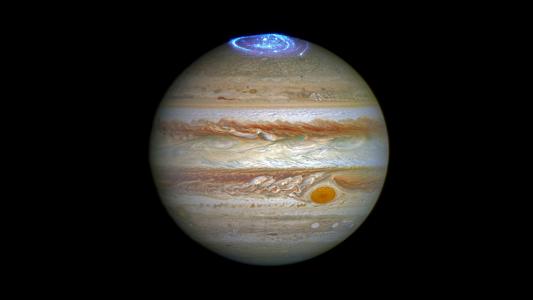For the first time, astronomers have clearly detected a disc of gas and dust circling an exoplanet — a discovery that could unravel some of the mystery surrounding planet and moon formation.
The deal with discs: Discs are a big deal in astronomy. After a star forms, a disc of leftover matter can accumulate in its orbit. As planets are forming from that matter, they can acquire their own discs, from which moons can sprout.
Looking at these discs could help us understand how solar systems develop, but finding them hasn’t been easy — of the more than 4,400 exoplanets astronomers have discovered so far, only two have still been in the process of forming.
A hint at moon formation: Both of those baby exoplanets are orbiting the same star 370 light-years away from Earth. In 2019, researchers reported finding signs that one of them might have a disc that could support moon formation around it, but they couldn’t say for certain.
“These observations are unique — so far — and have been long waited for.”
Myriam Benisty
Now, using data from the Atacama Large Millimetre/submillimeter Array (ALMA) in Chile, astronomers have confirmed the exoplanet is surrounded by a disc. They’ve also been able to determine that it contains enough matter for three moons the size of Earth’s.
“Our ALMA observations were obtained at such exquisite resolution that we could clearly identify that the disc is associated with the planet and we are able to constrain its size for the first time,” lead researcher Myriam Benisty said in a news release.
Looking ahead: The astronomers hope the data they’ve collected on the exoplanet will allow them to glean new insights into planet and moon formation.
“These observations are unique — so far — and have been long waited for, in order to test the theory of planet formation and directly observe the birth of planets and of their satellites,” Benisty told Reuters.
In the future, they hope to capture even better images of the newborn exoplanet and its star using the Extremely Large Telescope (ELT), which is currently under construction in Chile and should be operational in 2027.
“The ELT will be key for this research since, with its much higher resolution, we will be able to map the system in great detail,” co-author Richard Teague explained.
We’d love to hear from you! If you have a comment about this article or if you have a tip for a future Freethink story, please email us at [email protected].




